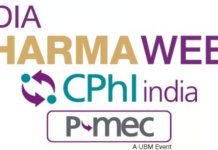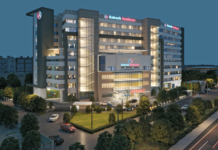New Delhi, August 30, 2018: Relief, made the tears she’d been holding, begin to fall when Santoshi Singh saw Bhupinder Singh, her 45 year old ailing husband, just after a successful heart surgery at civil hospital Haryana. The poverty stricken couple was struggling for last four months to get this life saving treatment which required a whopping Rs 2-3 lakhs in any private hospital in the Northern State. The cost was also way high even in a government hospital for Singh, who earns barely Rs 8000 a month selling fruits and vegetables.
But coming to his rescue, the state government hospital performed a free surgery on him saving his life. Thanks to the Public Private Partnership (PPP) model adopted by the Haryana government with Kerala based Meditrina Group of Hospitals.
The healthcare chain this month entered the first PPP model in cardiac care in any civil hospital in the country. The model is also being adopted in four civil hospitals of Haryana namely Panchkula, AmbalaCantt, Faridabad and Gurugram. In a bid to help the poor patients availing quality and affordable healthcare, the Meditrina Group of Hospitals has so far facilitated around 12,000 outpatient consultations, 7,000 Echocardiograms, 2,400 Angiograms, and 1,500 Angioplasty procedures under the arrangement.
The PPP model has helped several poor patients like Bhupinder Singh. The model is proving successful under the leadership of DrPrathap Kumar N, Chief Interventional Cardiologist, Chairman and Managing Director and at Meditrina Group of Hospitals, Kerala.DrPrathap Kumar has got the experience of successfully managing a PPP model in cardiac care at the Employees’ State Insurance Corporation (ESIC) model hospital in Kollam, Kerala from 2013.
“For socially backward and poor patients, the services are free of cost. For other patients, we are offering angioplasty with single stent at less than Rs 50,000 which is less than the government medical colleges and one third of the cost of private hospitals. Previously the treatment was out of reach for many patients,” Dr.Prathap Kumar said.
Moreover, For BPL and SC-ST patients the treatment is completely free of cost at all these centres with the Govt. of Haryana reimbursing all expenses to Meditrina Hospital. This support and initiative of the Haryana Govt has brought Quality Healthcare accessible to the common man.
The Health ministry of the Govt of Haryana was really wise in bringing up the concept of getting this PPP model in cardiac care. This has facilitated the spread of cardiac care at a pace which would have been difficult otherwise Haryana has been the first state in the country to have gone for a PPP model in cardiac care in India. This Haryana Model of Cardiac care opens up a novel way of extending quality cardiac care to some of the most remote areas of the country. The major issues that are faced today for development of quality speciality healthcare in rural areas can all be solved by introduction of such models.
“Over 180 angioplasties and more than 600 Cardiac Catheterization Procedures were done in the last 4 months in Faridabad. Out of these procedures over 30% are of patients from Below Poverty Line (BPL) or socially backward classes,” he said.
The attempt of adopting PPP model by the government has brought in a paradigm shift in several service sectors such as railways, Information technology (IT) including cardiac healthcare delivery in India.
According to Ministry of Health and Family Welfare, it is estimated that there are over 60 million patients with heart disease in India with over 2 million heart attacks every year. The low rates of healthcare spending by the state and national governments, uneven distribution of basic healthcare facilities, and the inability of large populations of rural and urban poor to access high-quality care further increases the challenge for health authorities to tackle the swelling disease burden.
Added to this is the disproportionately high prevalence of coronary artery disease in lower socioeconomic classes and consequent higher mortality due to poor access to affordable, high-quality health care.All these challenges toward acute treatment need to be balanced against additional health priorities toward prevention, and this scenario in India represents a prototypical case for many low- and middle-income countries.Public health experts claim that PPP model can be considered a solution to this problem; however, the potentially effective PPP initiative is plagued by several problems in parallel, major being unawareness among the masses.
“PPP model is the only solution to provide universal health coverage. We need to take an insight in the PPP model. In urban areas, there is availability of quality healthcare facilities through private sector even if it is costly, it is there. The main problem is with the rural areas that lack quality healthcare facilities. In rural areas and Tier 2 and Tier 3 cities, where private sector can play a pivotal role bringing healthcare to the poor,” said Dr.Prathap.
According to the economic survey 2018 expenditure by the government healthcare providers accounted for only 23% of the Current Health Expenditure (CHE). In parallel, the National Health Accounts (NHA) 2014-15 reflected the prominence of private hospitals and clinics among health care providers coupled with marked variation in prices of diagnostics across the country.
“Private health sector is the primary source of health care in urban areas (56%) and also in rural areas (49%). The most commonly reported reason for not using government health facilities at the national level is the poor quality of care reported by 48% of households that do not generally use government facilities. The second most commonly reported reason is that no government facility is nearby, reported by 45% of households followed by the long waiting time at government facilities (41%),” the survey report says. The hefty costs of private hospitals are born by the families pushing them towards out of pocket expenditure as majority of population is not covered by any health insurance.
“The major problem is unawareness among people that free and highly subsidized medical procedures are available for the poor. Even after we started providing free surgeries in Haryana, people didn’t know that there is such a facility,” he said.
In 2017, the government’s think tank NITI Aayog proposed the ministry of health and family welfare to adopt the PPP model to provide diagnosis and treatment for major non-communicable diseases in smaller cities including cardiac diseases. The proposal seeks to set up centres under the PPP model in district run hospitals which have at least 250 beds and an average daily footfall of 1000 patients in OPDs in the last couple of years.
Corporate Comm India(CCI Newswire)






















